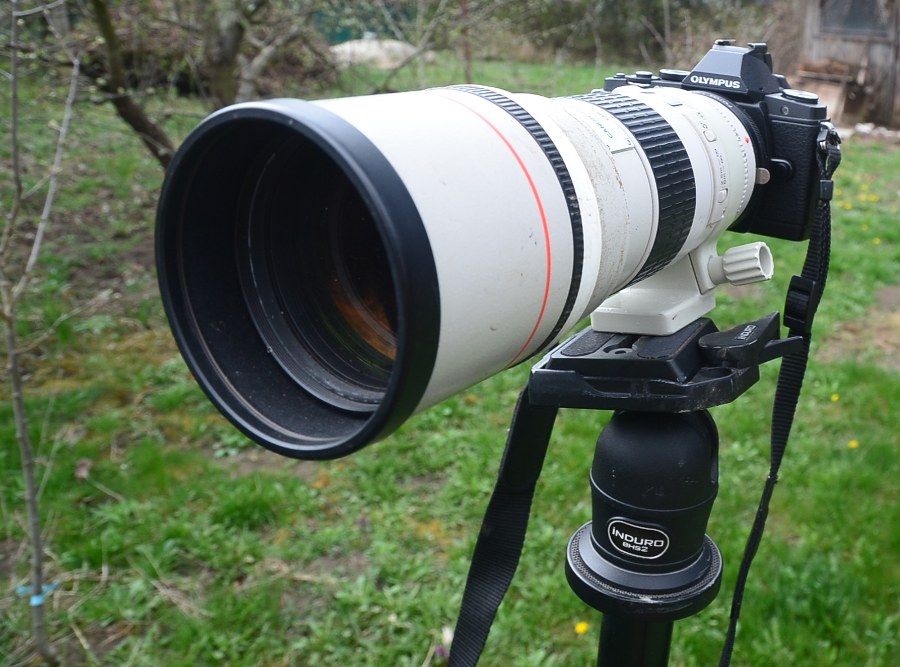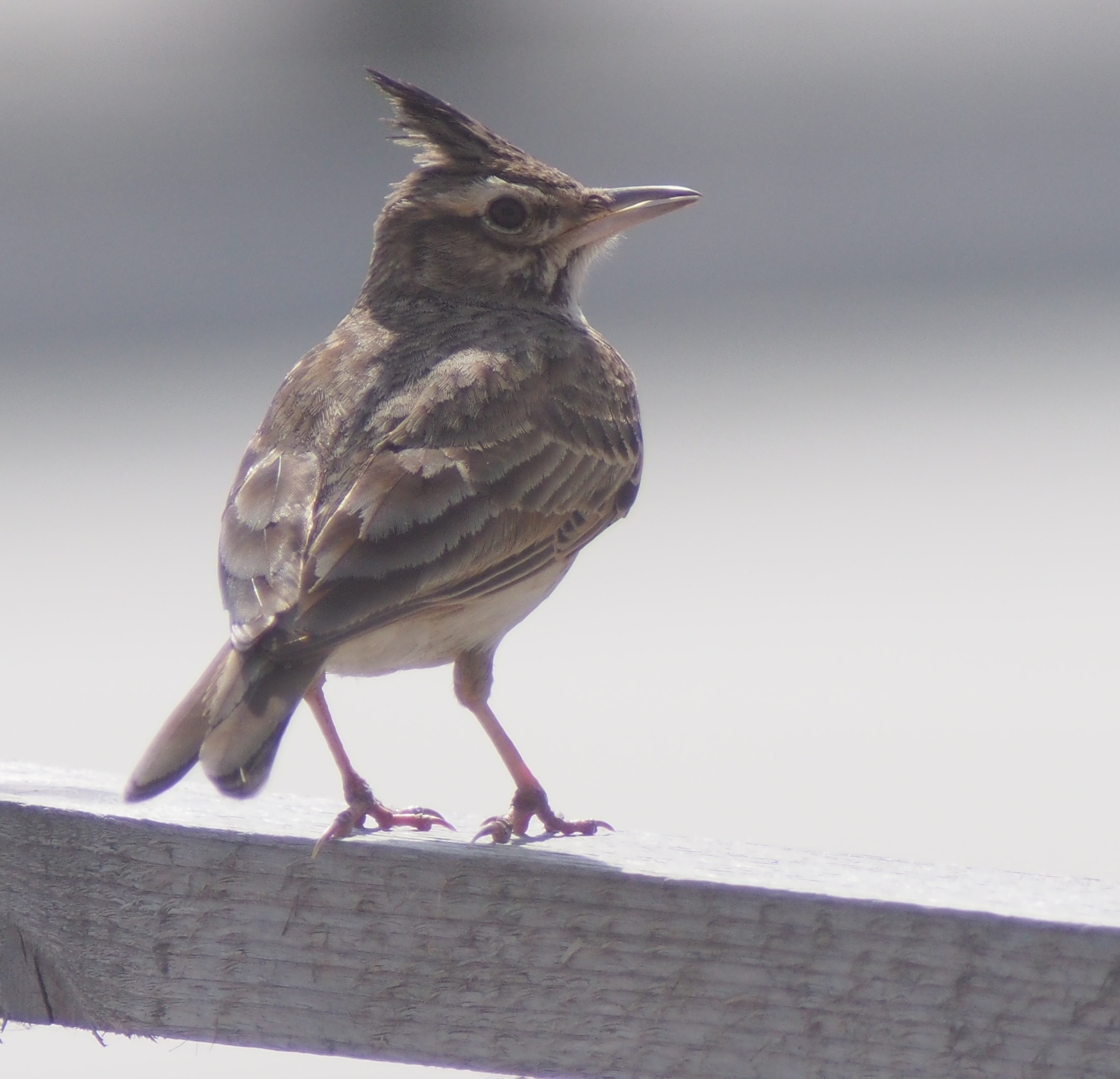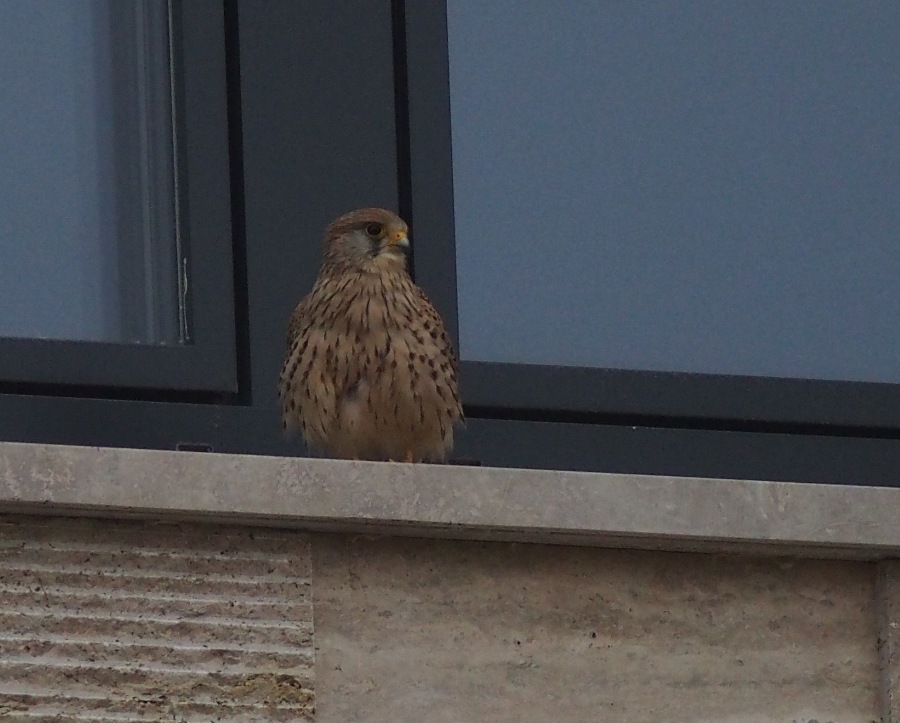Birding Canon EF lens Micro 4/3 Olympus camera

I thought about long ago to check a Micro 4/3 body with a Canon prime lens for more reach and smaller size for mostly birding purposes. I would even title this article as the ‘cheapest lightest quality kit for birding’
Panasonic or Olympus are the choices regarding camera bodies, the Olympus M 5 is cheaper and seems better suit to my goals, than the Panasonic Gx80 (which is quite popular nowadays) or other Panasonic (like GH4 GH3) cameras. The Panasonic are famous about their video capabilities. It is an experiment not yet know to keep the kit or sell and change or go back to normal Canon setup. I will write about the camera in more detail below.
Cheap birding kit with compromises, but with several advantages. The kit looks like this : Canon EF 300mm f4 (non is) cheap EF micro 4/3 adapter, Olympos E-M5 Mk I 16 megapixel camera. It is an experiment until now
mostly I used Canon cameras with Canon EF lenses. The above kit is much lighter and brighter or the two combined. But not perfect as you will see in details below.
No post processing as it comes from the camera lens wide open (as I see perhaps with the Kenko 1.4x converter, think because of contrast)
Why this lens and this camera
The lens is superb, the camera not bad either and both of them are quite affordable. I use a Kenko 1,4x as well, and perhaps an another 1,4x converter as well.
The camera – Olympus M5 Mk I.
I know this camera has even has a Mark III. version, my friend bought one, looks quite interesting night mode and 50 high resolution mode, 20 Megapixel sensor and others.
This (the Olympus M5 MK I) camera was a Gold award winning camera in Dpreview whatever this means at that time (2010) when it was released and has the same ballpark numbers in Dxomark like a Canon 550d / Canon 7d generation. In short numbers or awards doesn’t tell the whole story. For birding many cases needed high iso and high shutter speed. In high iso the camera according to my opinion not as good as my old Canon 30d which has lower numbers in Dxomark. The pixels are smaller and sometimes more paint like smearing of detail. But has good bright colours, better dynamic range, than the Canon 30d, 550d-7d, colors I would say better than either my Canon 30d or my Nikon d7000. Dynamic range of the Nikon d7000 is better, noise also much better. But overall the image of the Olympus looking quite good to my taste, different than the Nikon although both has Sony sensors. Not compare to Full frame wonders naturally. I was little worried about the shutter how is it behaves with constantly high speeds, but seems not a problem. The maximal shutter speed is 1/4000s which I rarely use.
Disadvantages
First the disadvantages: this is at least with the cheap adapter is manual focus only, perhaps a more expensive Metabo adapter can do the autofocusing trick, another disadvantage is that it is not possible change the aperture during shooting. But if you put a Canon Ef lens on a Canon camera body with dof button you can set different aperture, and remove the lens while pushing dof button, but not possible on the Micro 4/3 camera at least with the cheap adapter. After you mount the lens and used the prefixed aperture. The lens quite sharp wide open but the dof is not huge especially with a 1,4 x converter. If the bird is close aperture would be better to narrower, but mostly the brighter aperture better because of high shutter speed and therefore higher iso numbers. Missing autofocus is not a problem for me as I just playing with it, but compare to the professional Canon autofocus 30% of the manual focused shot are good enough to keep, I speak about distances 30m and more, for closer distances obviously easier to manual focus.
The above photo is heavily cropped in moderate light in shadow at iso 1600, the picture look ok at 50 percent crop at 100 pcent crop / uncropped is washed ugly. This is not bad according to my opinion at this price weight combo. Obviosly it would not compete at 10 times more expensive and three times more heavy setup.
Advantages
I can have a bright lens with f/4 which is similar to 375mm on an Aps-C camera, with a 1,4 teleconverter you have similar like 530mm f/5,6 equivalent lens on the Aps-C camera. Or otherwise explain you can get 1,25x more reach compare to Aps-C. This is a huge advantages regarding usability. The added reach makes it much more interesting. Even add double 1,4x converter can have more reach not photo but ‘birding’ quality
Observations
– I not spend much times yet with this combo
-The smaller sensored camera not as generous with the lens with the teleconverter than the bigger Aps-C sensored Canon cameras. Purple fringing which doesnt exist on C30d here appears, look not as sharp with the converter.
-Manual focusing is not easy, possible missing lots of shot by the not proper and not so fast focusing.
-With the bare lens the quality is superb, and has a bright lens which otherwise would cost a fortune. I speak about 6-7 times more money for a f/2,8 lens or 3 times money for a super Canon 400m f/5,6, unless I think about a Tokina 300 f/2,8 which is much worse regarding purple fringing.
-Some click on the aperture, like f/5 may lift the quality little bit more.
-Much lighter, smaller kit than the usual Canon 7d 400mm f/5 combination.
-Picture quality on the Olympus E-M5 camera very good, but little different characteristics than the Canon files, looks nice, but sometimes paint like in detail at higher iso-s.



